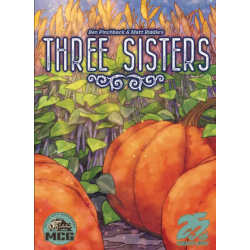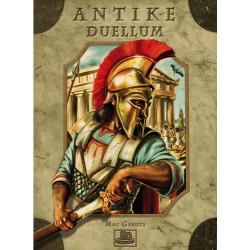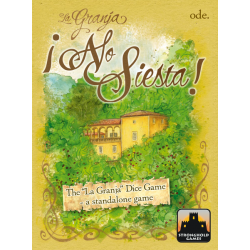No products in the cart.
Active filters
Windmill Valley
It’s the late 19th century, and more than 9000 windmills dot the landscape of the Netherlands, some of them purpose-built to dry the lowlands, called polders. In the polders between these windmills are fields filled with colorful tulips—the flower that once was a part of the turbulent history of the first financial bubble but is now simply a quintessential part of the Dutch landscape, especially on the famous Bloemen Route (or “Flower Route”).
Three Sisters
Three Sisters is a strategic roll-and-write game about backyard farming. Three Sisters is named after an indigenous agricultural technique still widely used today in which three different crops — in this case, pumpkins, corn, and beans — are planted close together. Corn provides a lattice for beans to climb, the beans bring nitrogen from the air into the soil, and the squash provides a natural mulch ground cover to reduce weeds and keep pests away.
7 Wonders 2nd edition
7 Wonders 2nd edition
Make the right decisions to lead your civilization to prosperity!
Antike Duellum
Antike Duellum is a 2-player version of Antike by Mac Gerdts, designer of Concordia.
Both players lead an ancient civilization. On one side, the Carthaginians play against the Romans. On the other side, the Greeks play against the Persians. Each nation starts with three cities, which produce marble, iron, and gold. These resources are used to develop the civilizations.
La Granja: ¡No Siesta!
La Granja: No Siesta is a standalone dice game following up the boardgame La Granja.
The players need to collect resources to cross them off on their scoring sheet in order to get the most victory points. They can hire helpers to use their special effects. They build a barn to store goods and sometimes they need to have a little time off and have a Siesta!
[DAMAGED] Windmill Valley
It’s the late 19th century, and more than 9000 windmills dot the landscape of the Netherlands, some of them purpose-built to dry the lowlands, called polders. In the polders between these windmills are fields filled with colourful tulips—the flower that once was a part of the turbulent history of the first financial bubble but is now simply a quintessential part of the Dutch landscape, especially on the famous Bloemen Route (or “Flower Route”).






![[DAMAGED] Windmill Valley](https://kienda.co.uk/6094-home_default/windmill-valley.jpg)





![[DAMAGED] Windmill Valley](https://kienda.co.uk/6094-medium_default/windmill-valley.jpg)